Expert Tips for Top-Quality T Shirt Printing: Elevate Your Custom Apparel
At its core, t-shirt printing is about creating a statement piece or a walking advertisement. But how? From screen printing to DTG, our guide walks you through the pros and cons of each method, focusing on quality, affordability, and design nuances. Whether you’re a newcomer or an experienced printer, get ready to elevate your custom t-shirts with practical knowledge that cuts through the fluff.
Key Takeaways
-
Custom t-shirt printing offers a variety of methods like screen printing and DTG, with screen printing being preferred for its vibrant and durable qualities, especially for large orders.
-
Branded t-shirts are effective marketing tools, and the quality and placement of the logo are crucial for brand representation; material choices like cotton and polyester blends impact comfort and printability.
-
Personalized t-shirts are a creative outlet for unique expressions with various design inspirations and trends; proper sizing and placement enhance the visibility and impact of the design.
Custom T Shirt Printing: The Basics
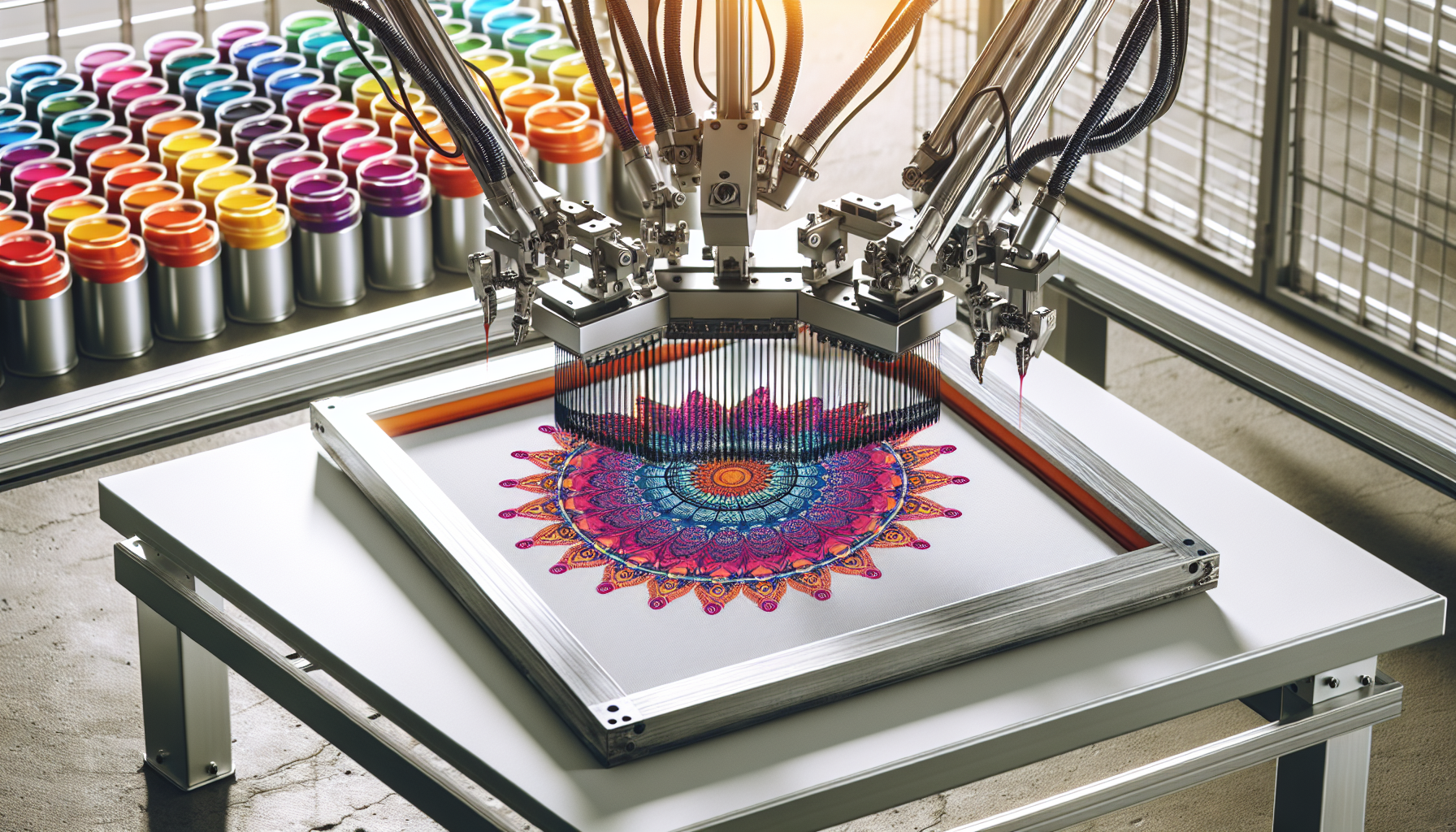
Custom t-shirt printing is all about bringing your unique designs or text to life on t-shirts or other apparel. It’s a fantastic way for individuals or businesses to create one-of-a-kind pieces that truly stand out. But how exactly is it done? There are several popular techniques for custom t-shirt printing, including:
-
Screen printing
-
Dye sublimation
-
Direct to garment (DTG) technique
-
Heat press printing
-
Vinyl cutting
-
Hand printing
Each method has its pros and cons, and the choice often depends on the specific requirements of your design.
Screen printing, in particular, is a crowd favourite when it comes to custom t-shirt printing. Known for its vibrant and long-lasting prints, this technique is commonly used for promotional t-shirts and other custom apparel. We’ll delve into the intriguing process of screen printing in the following segment.
Screen Printing
Screen printing is an age-old technique that involves creating a stencil on a mesh screen, placing ink across the screen, and using a squeegee to push the ink through the stencil onto the shirt. This method is loved for its ability to produce vibrant and detailed designs, making every print unique and high-quality.
Screen printing heavily relies on the quality of the artwork. Some examples of artwork that work well for screen printing are:
-
Original creations
-
Photographs
-
Specific phrases
-
Names
The key is to ensure that the artwork is high quality, avoiding elaborate effects and problematic colors for the best results.
Moreover, screen printing is cost-effective, especially for larger quantities of custom t-shirts, making it a popular choice for businesses and individuals alike.
Branded T Shirts: Boost Your Business Image
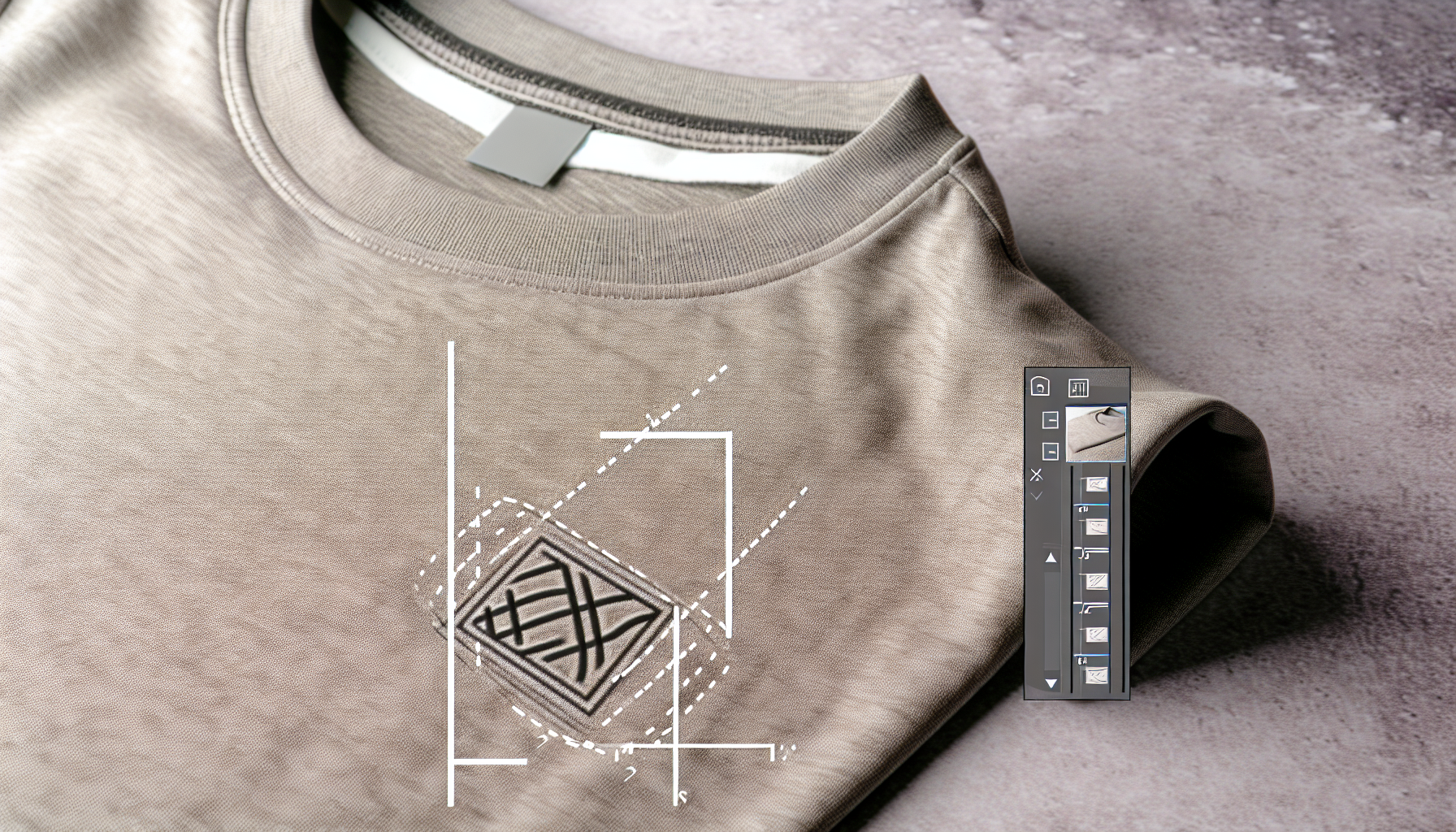
Moving beyond printing techniques, our focus now shifts to the realm of printed t shirts, specifically branded t-shirts and promotional t shirt offerings. These are more than just apparel; they are powerful marketing tools that can significantly enhance your business image. When you print your brand’s logo or message on a t-shirt, it becomes a mobile billboard promoting your brand wherever it goes.
The selection of appropriate material for your branded t-shirts is of utmost importance. Some options to consider are:
-
Cotton: prized for its softness, comfort, and printability
-
Polyester: loved for its quick drying properties, wrinkle resistance, and durability
-
Blend of cotton and polyester: offers a balance of these qualities, making it a popular choice for branded apparel
But it’s not just about the material; the design of the logo on the t-shirt is equally important. This is what visually represents your brand’s identity, values, and professionalism.
We’ll now investigate the intricacies of logo design and the ways to enhance its prominence on your branded apparel.
Logo Design Tips
Designing a logo for your branded t-shirts is an art in itself. The goal is to create a logo that is:
-
Simple
-
Memorable
-
Original
-
Versatile
-
Balanced
-
Timeless
A simple yet effective logo sticks to simple shapes and fonts, avoids complex designs, and is mindful of the colors used. It should reflect your brand and values, resonate with your target audience, and make efficient use of empty space to keep the design clean.
It is important to select fitting color combinations and location for your logo. Popular color combinations for logo design on T-shirts include:
-
Blue and turquoise
-
Yellow and blue
-
Orange and red
-
Mustard yellow
-
Fern green
-
Indigo blue
-
Green, pink, and yellow
As for the placement, aim for around 2.5-3 inches below the neckline and pick a size that’s easy to see. With these tips, you can create a logo that not only looks great on a t-shirt but also enhances your brand identity.
Choosing the Right T Shirt Material
Choosing the right material for your branded t-shirts is not just about comfort and aesthetics; it also impacts the printing process and the final result. For summer or hot climates, natural fabrics like cotton, linen, and silk are preferred as they are breathable, lightweight, and keep you cool. On the other hand, synthetic fabrics like polyester and nylon can trap heat and make you feel uncomfortable.
If durability is your concern, go for polyester or cotton/polyester blends. These materials are known for their lasting quality. The material of the t-shirt also influences the printing process. For instance, 100% cotton shirts usually give better results because they work well with the inks used in DTG printers, making the prints more solid. But if the cotton is too thick, it can soak up too much ink and make the print look faded.
Personalised T Shirts: Unleash Your Creativity
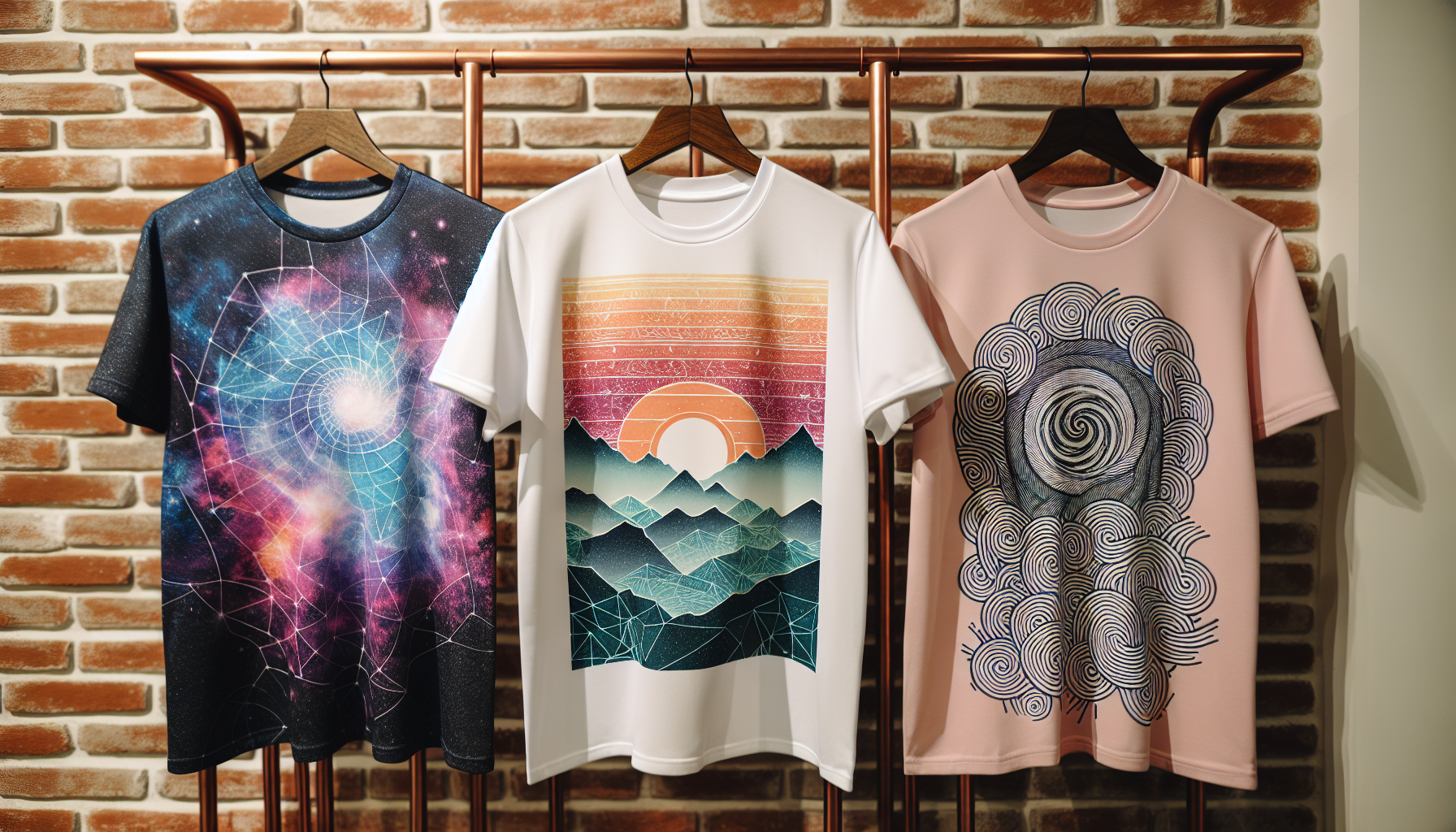
Having discussed the basics of t-shirt printing and branding, we now turn to the topic of personalised t-shirts. This is where you can truly unleash your creativity and express your unique style. Some ideas for personalised t-shirts include:
-
Funny quotes
-
Abstract designs
-
Personal photos or artwork
-
Inspirational messages
-
Custom logos or branding
There are no limits to what you can create on a t-shirt. Let your imagination run wild and create a design that is truly one-of-a-kind.
But where do you find inspiration for your designs? Well, platforms like Pinterest, 99designs, Looka’s blog, Designhill, and Dribbble offer a wealth of design ideas and tips. The themes that people are currently into for personalised t-shirts range from:
-
funny
-
seasonal occasions
-
animals
-
retro
-
hobbies
-
political
-
humorous graphics/memes
-
abstract designs
-
cartoons
-
floral designs
-
real photos
However, the design isn’t all; the design’s size and its placement on the t-shirt are also significantly influential. More on that in the next subsections.
Design Inspiration
Design inspiration can come from anywhere. However, if you’re looking for what’s hot right now, some popular themes include:
-
Bold and decorative typography
-
Wavy wording
-
Mental health mantras
-
Hobby highlights
-
Imaginative designs
-
3D typography
-
Psychedelic and punk designs
-
Famous quotes and sayings
-
Black and white prints
-
Personalized t-shirts
-
Doodle designs
-
Abstract painting prints
-
Eco-friendly and sustainable designs
-
Minimalist graphics
-
Retro and vintage designs
-
Expressive designs
When creating a unique t-shirt design, you can start from scratch or use design templates to customize. Here are some tips to help you create a great design:
-
Do your research and look for inspiration.
-
Aim to create something that delights and stands out.
-
Design with the intention of wearing it yourself.
-
Understand your usable space and consider the placement of your design.
-
Thoughtfully consider color choices and how they will complement your design.
-
Apply your creativity and experiment with different elements. Remember, the best t-shirt design is one that is not only aesthetically pleasing but also resonates with the wearer.
Sizing and Placement
The size and placement of a design on a t-shirt can impact how noticeable it is. Here are some tips:
-
For a design to really stand out, it’s best to go bigger and place it in the center.
-
For a more subtle look, smaller logos can be placed on areas like the sleeves or upper chest.
-
Moreover, the size of a design really makes a difference in how the t-shirt looks. If the design is too big on a small tank top, it can be too overwhelming, and if it’s too small on a larger t-shirt, it might not stand out.
When deciding the right size and position for a logo on a t-shirt, you should start by placing the design roughly 2.5-3 inches below the neckline. Also, measure the vertical line from the point where the collar meets the shoulder down to the bottom of the shirt. This will ensure the logo looks good and is easy to see.
Custom Apparel for Every Occasion
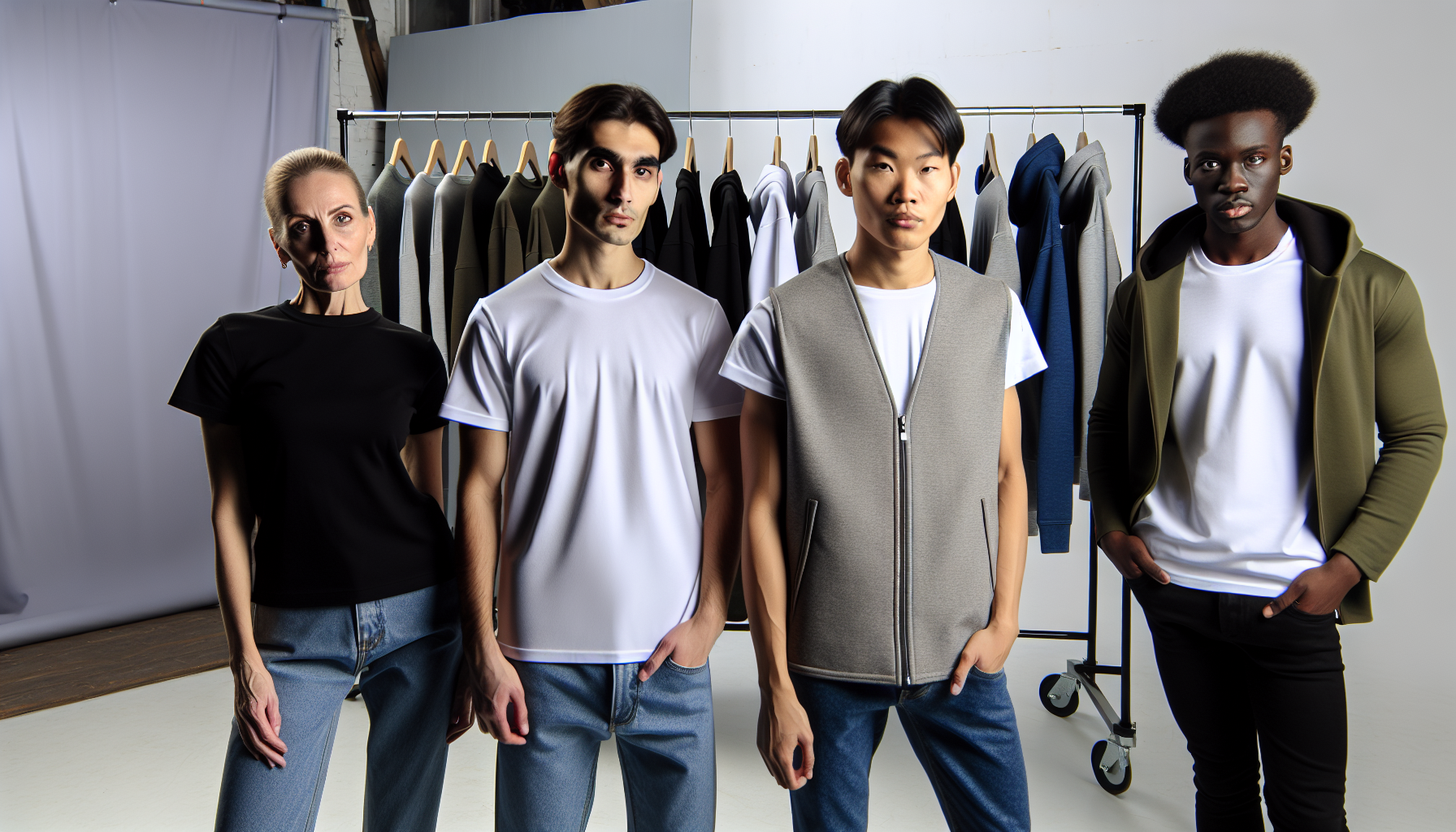
The scope of custom apparel extends beyond just t-shirts. They extend to a variety of garments, offering endless possibilities to create unique pieces for every occasion – be it a corporate event, charity fundraiser, or a sports team meetup. The key is to choose the style and fabric that suits the occasion while sticking to your budget and finding a reliable custom apparel provider for good quality and on-time delivery.
We will now examine some popular alternatives to t-shirts in custom apparel, beginning with options for ladies and unisex styles.
Ladies' and Unisex Options
When it comes to ladies’ and unisex t-shirt options for custom printing, there are plenty of choices. The popular t-shirt styles for women in custom printing include:
-
Strong statements
-
Wavy wording
-
Mental health mantras
-
Hobby highlights
-
Imaginative designs
-
Custom lettering
-
Illustrations
-
Minimalist styles
Selecting the correct size is equally important. Unisex t-shirts usually have sizes from XS to XXL. However, since they’re not designed specifically for women, you might want to go for a smaller size than your usual women’s size.
As for the colors, dark gray heather, cornsilk, berry, light blue, natural, orange, purple, and red are in vogue right now.
Vests and Other Garments
Apart from t-shirts, vests are another popular choice for custom printing. Custom printed vests are usually made from polyester and often use DTF printing, which is a good choice for polyester and other non-cotton fabrics as it gives high accuracy and can replicate original designs on different types of fabrics.
But custom clothing is not just limited to t-shirts and vests. You can also customize custom shirts, golf shirts, overalls, hoodies, aprons, and bags.
Just like t-shirts, printing on these garments involves different methods and the results can vary depending on the type of garment and the printing method used. And just like t-shirts, getting the size right is crucial for these garments too.
Delivery and Pricing in South Africa
Several factors can impact delivery and pricing in the context of custom t-shirt printing in Cape Town, South Africa. On average, custom t-shirt printing in South Africa can vary from R90 to R180 for the shirt price, and transfers can cost between R60 to R90 per print.
Ordering a large quantity of shirts can significantly lower the cost per shirt. The factors that determine the final price include:
-
The complexity of the design
-
The number of colors used
-
The type of apparel
-
Print locations
-
Printing method
-
Quantity of shirts ordered
Price Factors
When ordering a larger quantity of shirts, the cost per shirt decreases significantly. For example, if you order 50-100 shirts, they might cost R69.99 each, but if you order 301-500 shirts, they could cost as low as R58.99 each.
Apart from the quantity, the complexity of the design and the type of material and color of the shirt also affect the cost. More complex designs or those needing special effects like metallic or neon inks usually cost more than simpler ones.
Furthermore, printing on light-colored fabrics is usually cheaper than on dark fabrics because dark ones might need extra layers of ink.
Start Your Own T Shirt Printing Business
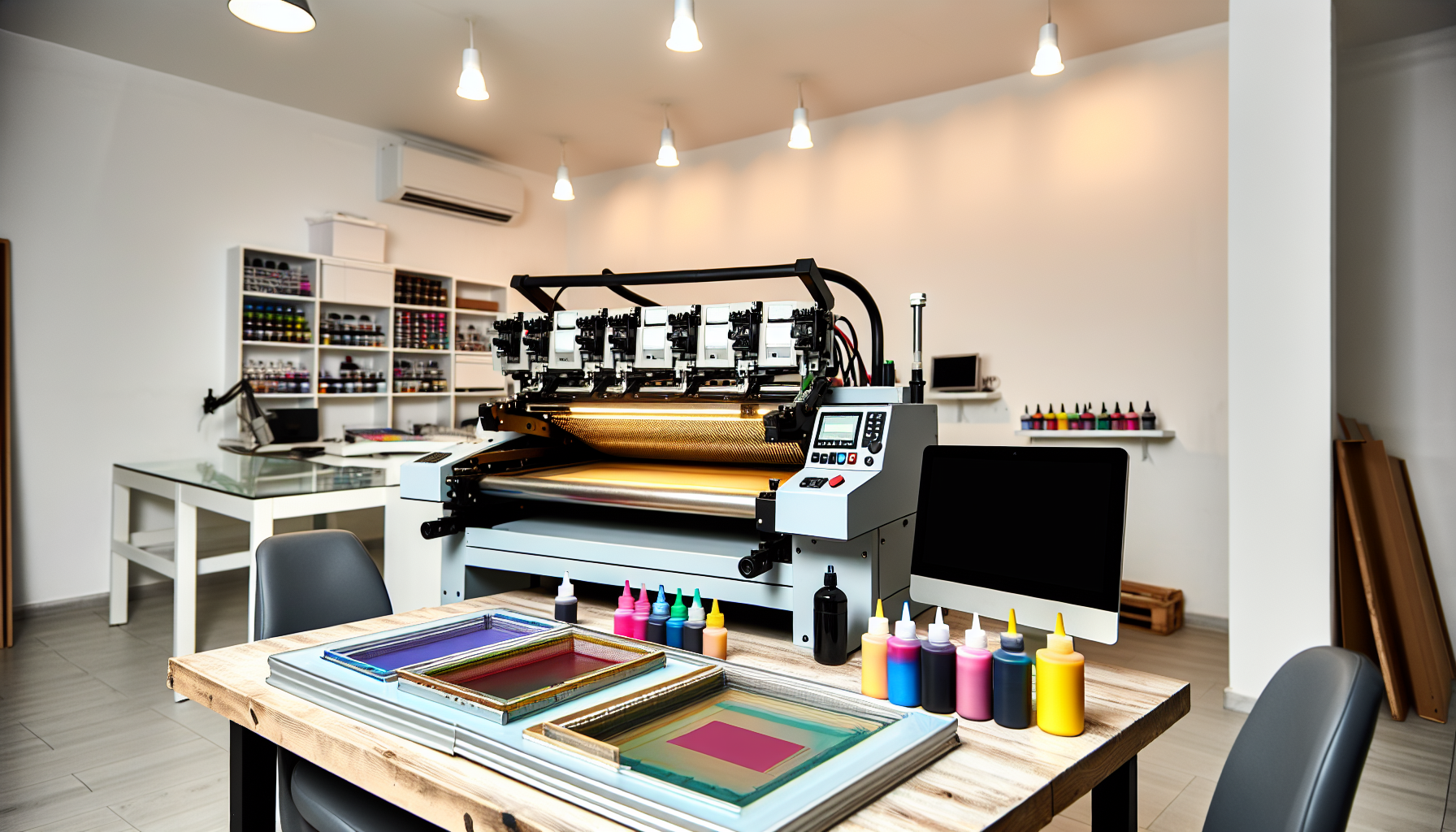
For those who find the world of custom t-shirt printing intriguing and wish to start their own enterprise in this field, here are some valuable tips. Starting a t-shirt printing business requires some initial investment, which can range anywhere from $1,000 to $21,740, with an average cost of around $11,015. You’ll need printers, computers, graphics programs, transfer paper, heat press, screens, cutter, emulsion, dryer, and inks to get started.
Equipment and Supplies
Initiating a t-shirt printing business necessitates a variety of equipment and supplies. Printers, computers, heat press machines, screens, cutters, emulsion, dryer, and inks are the basics you’ll need to get started. For screen printing, you’ll also need a scoop coater, screen tape, ink spatula or scoop, platen adhesive, and digital non-inkjet film.
When choosing a t-shirt printing machine, reliability is key. Some reliable brands of t-shirt printing machines include HTVRONT, Cricut, Epson, Brother, Col-Desi, Kornit, and M&R.
Marketing Strategies
After your equipment and supplies are set up, the subsequent step involves marketing your enterprise. Effective marketing strategies include:
-
Targeting wholesale orders
-
Creating unique t-shirts for retail stores
-
Setting clear business goals
-
Understanding your audience
-
Building a trustworthy brand
-
Having a professional website and active social media presence.
Social media platforms are a great way to reach your target audience. Here are some strategies to increase your brand visibility and reach:
-
Choose the right platforms
-
Team up with influencers
-
Share top-notch visual content that showcases your brand
-
Run contests and giveaways
-
Encourage customers to show off your brand on their profiles
By implementing these strategies, you can significantly increase your brand visibility and reach.
Summary
In conclusion, custom t-shirt printing is a versatile and creative way to express your unique style or boost your business image. From understanding the basics of t-shirt printing to exploring different printing methods like screen printing, choosing the right material and design for your branded t-shirts, finding inspiration for your designs, understanding sizing and placement of designs, exploring different custom apparel options to starting your own t-shirt printing business, we’ve covered all you need to know about this unique art. So go ahead, unleash your creativity, and make your mark in the world of custom t-shirt printing!
Frequently Asked Questions
How do I print something on my t-shirt?
You can print your own design on a t-shirt using iron-on transfer paper and an inkjet printer. Simply print your design on the transfer paper, cut it out, and iron it onto the t-shirt. Then let it cool and carefully peel off the paper.
Is embroidery easy for beginners?
Yes, embroidery is easy for beginners - all you need is some fabric, thread, and a needle to get started! You can definitely do it.
What are the popular techniques for custom t-shirt printing?
The popular techniques for custom t-shirt printing are screen printing, dye sublimation, direct to garment (DTG) technique, heat press printing, vinyl cutting, and hand printing. Each method offers unique results based on your design and material.
What factors influence the price of custom t-shirt printing services?
The price of custom t-shirt printing services is influenced by factors such as design complexity, number of colors, type of apparel, print locations, printing method, and quantity of shirts ordered. Be mindful of these factors when considering custom t-shirt printing services.
What kind of materials do they use for vests and what printing methods do they usually go for?
Most custom printed vests are made from polyester and are often printed using DTF printing. This method provides vibrant and durable designs.
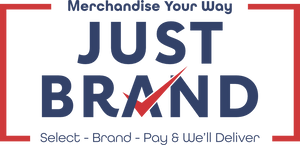

Leave a comment